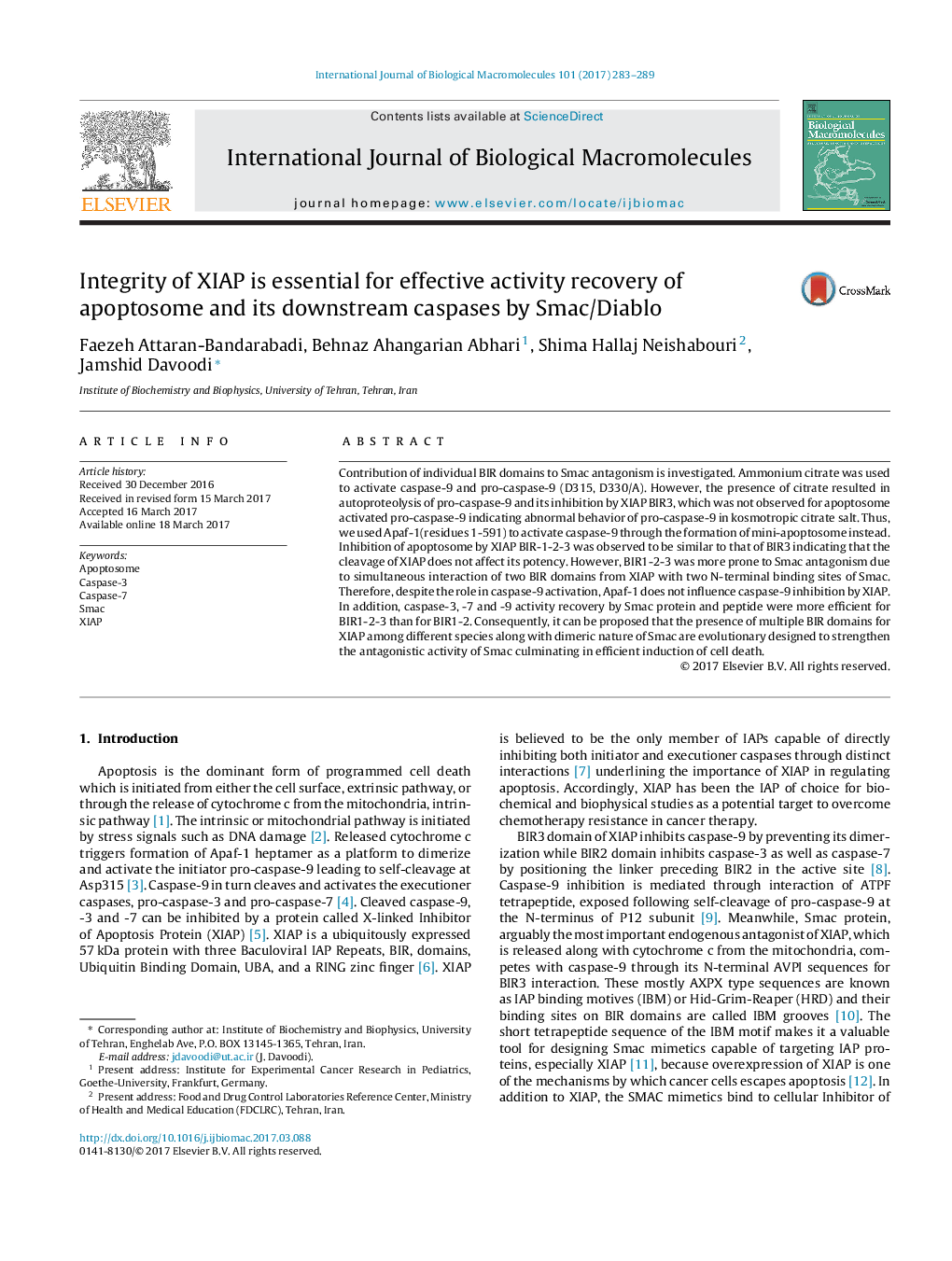| Article ID | Journal | Published Year | Pages | File Type |
|---|---|---|---|---|
| 5511954 | International Journal of Biological Macromolecules | 2017 | 7 Pages |
Contribution of individual BIR domains to Smac antagonism is investigated. Ammonium citrate was used to activate caspase-9 and pro-caspase-9 (D315, D330/A). However, the presence of citrate resulted in autoproteolysis of pro-caspase-9 and its inhibition by XIAP BIR3, which was not observed for apoptosome activated pro-caspase-9 indicating abnormal behavior of pro-caspase-9 in kosmotropic citrate salt. Thus, we used Apaf-1(residues 1-591) to activate caspase-9 through the formation of mini-apoptosome instead. Inhibition of apoptosome by XIAP BIR-1-2-3 was observed to be similar to that of BIR3 indicating that the cleavage of XIAP does not affect its potency. However, BIR1-2-3 was more prone to Smac antagonism due to simultaneous interaction of two BIR domains from XIAP with two N-terminal binding sites of Smac. Therefore, despite the role in caspase-9 activation, Apaf-1 does not influence caspase-9 inhibition by XIAP. In addition, caspase-3, -7 and -9 activity recovery by Smac protein and peptide were more efficient for BIR1-2-3 than for BIR1-2. Consequently, it can be proposed that the presence of multiple BIR domains for XIAP among different species along with dimeric nature of Smac are evolutionary designed to strengthen the antagonistic activity of Smac culminating in efficient induction of cell death.
